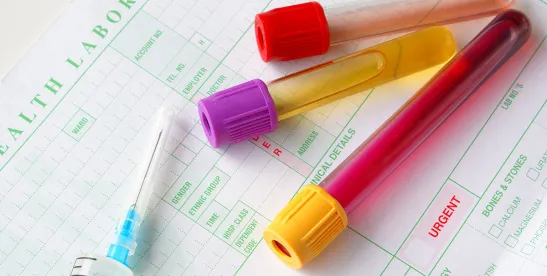As the summer Olympic Games are upon us, there will inevitably be instances of athletes being banned from the Games due to doping. The U.S. Anti-Doping Agency (USADA) is the body governing American Olympic and Paralympic athletes, and the testing standards are stringent.
Who can forget the female US track star banned from the Tokyo Games because she tested positive for marijuana? [Spoiler alert: she’s back and faster than ever.] While still a banned substance for the Olympics, the NCAA Division 1 Council voted recently “to remove cannabinoids from the banned drug class for NCAA championships and postseason football, effective immediately.”
Many companies deal with many of the same complex issues related to testing that are present in testing elite athletes. Companies must ensure their testing protocols meet the highest standards and implement them with the utmost care in a variety of situations, like job applicants, pharmaceutical purity, medical diagnoses, and more.
Drug testing, however, is an evolving science and can present challenges to testing agencies or companies. The testing protocols involve a complex process of sample collection, transportation, analysis, and reporting, and they must be frequently updated to stay current with the creation of new drugs. No testing is foolproof, however, and various factors can influence results, including sample contamination and lab errors.
No testing is foolproof, however, and various factors can influence results, including sample contamination and lab errors.
The sample collection process itself can be extremely detailed. The Federal Motor Carrier Safety Administration, as part of the U.S. Department of Transportation, provides its own policies for drug testing, including “DOT’s 10 Steps to Collection Site Security and Integrity” which provides specific, detailed information to ensure the validity of specimen testing. Some include:
- Maintain personal control of the specimen and CCF (custody and control form) at all times during the collection.
- Secure any water sources or otherwise make them unavailable to employees (e.g., turn off water inlet, tape handles to prevent opening faucets, secure tank lids).
- Ensure that the water in the toilet and tank (if applicable) has bluing (coloring) agent in it. Tape or otherwise secure shut any movable toilet tank top, or put bluing in the tank.
- Ensure that no soap, disinfectants, cleaning agents, or other possible adulterants are present.
The actual analysis of drug test specimens is done with the most sophisticated techniques available, like mass spectrometry and chromatography, but other methods are constantly being tried to improve accuracy of the results.
A 2019 paper in Drug Testing and Analysis focused on analyzing a widely abused drug that affects maximum performance in endurance athletes. The authors tested male cyclists with three types of testing protocols. While the “sarcosyl‐PAGE urine assay for rHuEPO (specifically epoetin β) did not show false positive results after confirmation analysis,” it had a limited detection window, and they ultimately concluded that all the methods they tested had shortcomings. They concluded that it was “critical to continue research to improve existing and develop new doping detection methods.”
In addition, some drugs are legal if present in an amount below a set standard. The legal blood alcohol content limit for a person driving a motor vehicle in the US is 0.08%, so a person who submits to a breathalyzer test resulting in a 0.06% may not be ticketed. However, the limits for drivers of commercial motor vehicles may be lower – in North Carolina the limit is 0.04%.
And sometimes even a legal substance can produce a false positive test at times (helpful hint: don’t eat lemon poppy seed muffins before getting drug tested). See US Department of Defense memo advising service members to avoid foods with poppyseeds as it “could cause a codeine-positive urinalysis result and undermine the department's ability to identify illicit drug use."
Ensuring the accuracy of the tests is critical but also challenging, and agencies must try to work within the biochemical complexity of the substances and understand the influence of an individual’s personal drug metabolism. Lawsuits may result if a protocol is followed incorrectly or if false positives lead to negative consequences.
The sophisticated process of testing substances must continuously adapt to the cutting-edge advances in science, or the results will not be seen as credible. Whether it’s an athlete unfairly banned from a competition, or an employee terminated for cause, the legitimacy of the testing process depends on it being in lockstep with the science.




 />i
/>i

